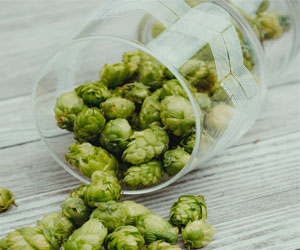


The Artistry In Every Stitch
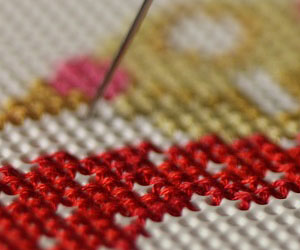
Threadwork techniques encompass a wide spectrum of artistic and skillful endeavors that revolve around the use of threads to create intricate and visually stunning designs. Whether you're working with a needle and thread, embroidery hoop, or a sewing machine, these techniques are a testament to human creativity, patience, and dedication.
The Versatility Of Threadwork Techniques: Threadwork techniques include embroidery, quilting, appliqué, cross-stitch, and various other forms of stitching. These crafts can be found in various cultures worldwide, each carrying its unique heritage and traditions. While their purposes may vary, the unifying factor is the transformative power of threads in turning plain fabrics into works of art.
Embroidery: Embroidery is one of the most widely recognized forms of threadwork. It involves the use of decorative stitches to create intricate designs on fabric. Whether it's delicate floral patterns on a handkerchief or intricate motifs on a bridal gown, embroidery adds beauty, texture, and personality to textiles. Techniques like satin stitch, chain stitch, and crewelwork enable artists to create a myriad of effects, from raised surfaces to smooth, flowing lines.
Quilting: Quilting is a technique that marries practicality and artistry. Quilts are made by stitching layers of fabric together, often with intricate patterns. Traditional quilt designs tell stories and are passed down through generations. Quilting stitches can be simple or highly detailed, adding depth and warmth to these cherished heirlooms.
Cross-Stitch: Cross-stitch is known for its precise, grid-based patterns created by "X" stitches. It is a popular choice for decorative items like samplers and personalized gifts. The process is meditative, requiring attention to detail and precision in every stitch.
Appliqué: Appliqué is the art of attaching smaller pieces of fabric onto a larger base to create images, patterns, or designs. This technique can be found in quilting, clothing, and decorative textiles. Appliqué often involves intricate stitching to secure the fabric pieces and add embellishments.
Thread Painting: Thread painting is a technique that mimics the strokes of a painter's brush with colored threads. Artists use varying thread densities and colors to create detailed images on fabric. The result is a stunning visual masterpiece.
Modern Innovation: Threadwork techniques have also embraced modern technology. Computerized embroidery machines allow for intricate and repetitive designs with precision and speed. Additionally, contemporary artists often combine traditional techniques with digital art, creating a fusion of the old and new.
Cultural Significance: Many threadwork techniques carry cultural and historical significance. The choice of colors, patterns, and motifs can reflect the heritage and storytelling of a particular community. These crafts also serve as a way to preserve and pass down traditions through the generations.
Threadwork techniques are more than just artistic hobbies; they are a testament to the enduring human spirit of creativity and expression. Each stitch, whether painstakingly precise or freeform and spontaneous, represents the dedication of the artist to transform a simple piece of fabric into a work of art. Whether you're a seasoned practitioner or a novice, exploring the world of threadwork techniques allows you to tap into your creative potential and embrace the therapeutic and rewarding nature of these crafts. It's a journey of artistry, patience, and transformation, one stitch at a time.


Exploring Herb Uses In Cooking
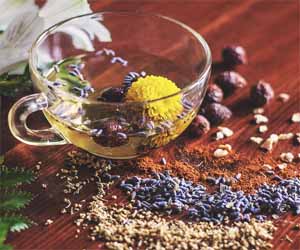 Rosemary And Lamb: Rosemary's robust flavor pairs harmoniously with the rich and tender nature of lamb.
Rosemary And Lamb: Rosemary's robust flavor pairs harmoniously with the rich and tender nature of lamb.
Mint And Desserts: Mint's refreshing taste is perfect for desserts like chocolate mousse or fruit salads.
Parsley And Seafood: The bright, grassy flavor of parsley beautifully complements seafood dishes, such as shrimp scampi.
Versatile Uses
Herbs are incredibly versatile and can be used in various culinary applications:
Marinades: Herbs can be included in marinades to infuse meat, poultry, or vegetables with flavor. For example, a marinade of garlic, rosemary, and lemon juice can transform chicken into a delectable dish.
Sauces And Dressings: Herbs can be used to create vibrant sauces, such as pesto or chimichurri, or to elevate salad dressings, like a balsamic vinaigrette with fresh basil.
Flavoring Meats: Herbs can be used as a rub or stuffing for meats, adding depth and aroma. Sage and thyme with turkey, for instance, create a classic Thanksgiving flavor.
Infusions And Garnishes: Herbs can be used to infuse oils, butters, or even cocktails. A sprig of fresh mint in a mojito or a basil leaf in a gin and tonic can enhance the beverage's flavor and aroma.
The Art Of Shaping Clay On A Potter's Wheel
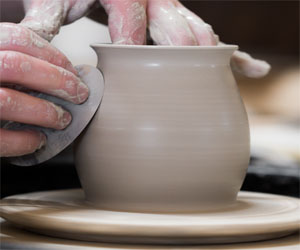 A Glimpse Into History: Wheel-throwing has an ancient history, with its origins dating back to around 4000 BCE in regions such as Mesopotamia and China. These early potters used simple, hand-driven wheels to craft their vessels. The technology evolved over time, leading to the development of foot-powered and, eventually, electric pottery wheels, which are widely used today.
A Glimpse Into History: Wheel-throwing has an ancient history, with its origins dating back to around 4000 BCE in regions such as Mesopotamia and China. These early potters used simple, hand-driven wheels to craft their vessels. The technology evolved over time, leading to the development of foot-powered and, eventually, electric pottery wheels, which are widely used today.
The Process: The wheel-throwing process begins with a lump of clay centered on the wheel head. Proper centering is a crucial skill that requires careful hand and foot coordination to achieve balance and symmetry. Once centered, the potter uses their hands to shape the clay, pulling it upward and outward, manipulating the form as it spins on the wheel. The wheel's rotation allows for the creation of consistent and precise shapes.
Technique And Skill: Wheel-throwing is a craft that demands patience and skill. Potters must control the speed and pressure applied to the clay to achieve the desired form. Various tools, such as ribs and wooden or metal shaping tools, are used to refine the shape, create textures, and add decorative elements. The level of precision required in wheel-throwing makes it both an art and a science, where mastery comes through experience and practice.
Functional And Artistic Pottery: One of the most remarkable aspects of wheel-throwing is its versatility. Potters can create a wide range of functional items, including cups, bowls, plates, and vases. The uniformity and precision offered by wheel-throwing make it well-suited for producing pottery used in daily life. At the same time, many artists utilize the wheel-throwing technique to create decorative and sculptural pieces, pushing the boundaries of what can be achieved with clay.
A Creative Path To Wellness
 Mindfulness: Crafting encourages mindfulness, which is the practice of being fully present in the moment. When you're immersed in a creative project, your focus shifts to the task at hand. This state of mindfulness can reduce symptoms of anxiety and depression and improve overall well-being.
Mindfulness: Crafting encourages mindfulness, which is the practice of being fully present in the moment. When you're immersed in a creative project, your focus shifts to the task at hand. This state of mindfulness can reduce symptoms of anxiety and depression and improve overall well-being.
Self-Esteem: Completing a craft project can provide a significant boost to self-esteem and self-worth. Seeing your creations come to life fosters a sense of accomplishment, pride, and a positive outlook on your abilities.
Distraction From Negative Thoughts: Crafting serves as a productive and enjoyable distraction from negative or intrusive thoughts. By focusing on the project, you can redirect your mental energy away from worries and concerns.
Social Connection: Crafting can be a social activity, allowing you to connect with others who share your interests. Joining crafting communities, attending workshops, or crafting with friends can provide a sense of belonging and reduce feelings of isolation.
Emotional Expression: Craft projects offer a creative outlet for emotional expression. Whether it's through painting, writing, or other crafts, you can channel your emotions and experiences into your creations, helping you process and cope with challenging feelings.
Neurological Benefits: Engaging in creative activities has been associated with changes in brain chemistry. These changes can lead to improved cognitive function, enhanced problem-solving skills, and a decrease in symptoms of mental health disorders.
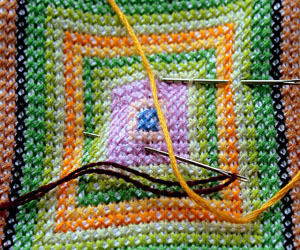

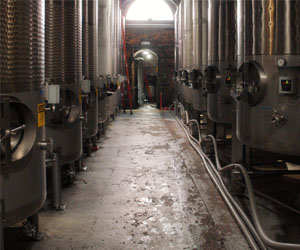



From Seed To Harvest
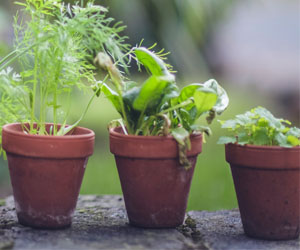 Soil Preparation
Soil Preparation
Prepare the soil by ensuring it is well-draining and rich in organic matter. Herbs generally prefer slightly alkaline soil with good aeration. To improve soil quality, incorporate compost or well-rotted organic matter.
Planting Techniques
When planting herbs, pay attention to spacing. Different herbs have varying requirements for space between plants. Proper spacing allows air circulation and minimizes the risk of disease.
Watering And Drainage
Watering is a critical aspect of herb growing. Most herbs prefer well-drained soil, so avoid overwatering, which can lead to root rot. Water deeply but less frequently, allowing the soil to dry out between watering sessions.
Sunlight Requirements
Herbs love sunlight, so make sure your garden receives at least 6 to 8 hours of direct sunlight per day. If you're growing herbs indoors, consider providing supplemental light with grow lights.
Pruning And Pinching
Regular pruning and pinching are key techniques for encouraging bushier growth and better flavor.
A Sustainable Lifestyle For A Better Future
 Reduce, Reuse, Recycle: This timeless mantra forms the foundation of green living. Reducing consumption, reusing items when possible, and recycling materials are essential steps in minimizing waste.
Reduce, Reuse, Recycle: This timeless mantra forms the foundation of green living. Reducing consumption, reusing items when possible, and recycling materials are essential steps in minimizing waste.
Energy Efficiency: Green living encourages energy-conscious choices such as using energy-efficient appliances, properly insulating homes, and turning off lights and electronics when not in use.
Sustainable Transportation: Opting for eco-friendly modes of transportation, such as biking, walking, carpooling, or using public transit, reduces carbon emissions associated with personal vehicles.
Sustainable Food Choices: Adopting a diet rich in locally sourced, organic, and plant-based foods can reduce the carbon footprint associated with food production and distribution.
Water Conservation: Conserving water through practices like fixing leaks, using low-flow fixtures, and reducing water waste is a fundamental aspect of green living.
Minimalism: Embracing minimalism involves living with fewer possessions, which not only reduces consumption but also fosters a simpler, more sustainable lifestyle.
Benefits Of Green Living
Reduced Environmental Impact: Green living minimizes resource consumption, lowers carbon emissions, and reduces waste, thus mitigating harm to the environment.
Cost Savings: Energy-efficient practices, reduced consumption, and sustainable choices often lead to financial savings over time.
Healthier Lifestyle: Sustainable food choices, reduced exposure to harmful chemicals, and increased physical activity associated with green living can lead to better physical and mental health.
Community And Social Benefits: Green living can foster a sense of community, as people often engage in local, eco-friendly initiatives and share common goals.